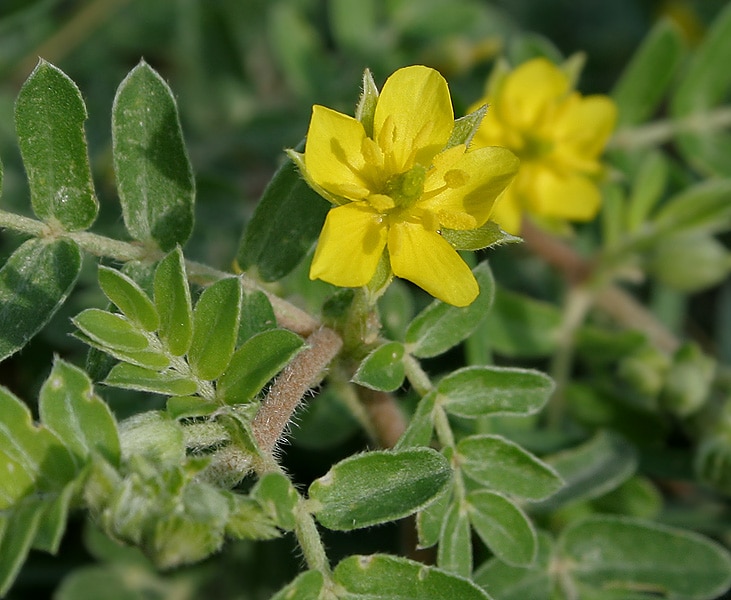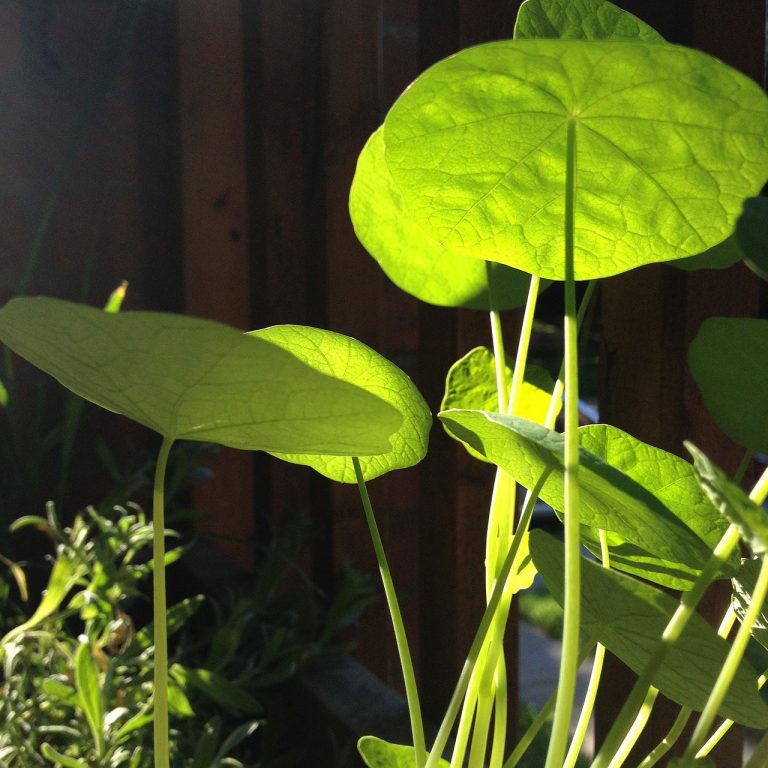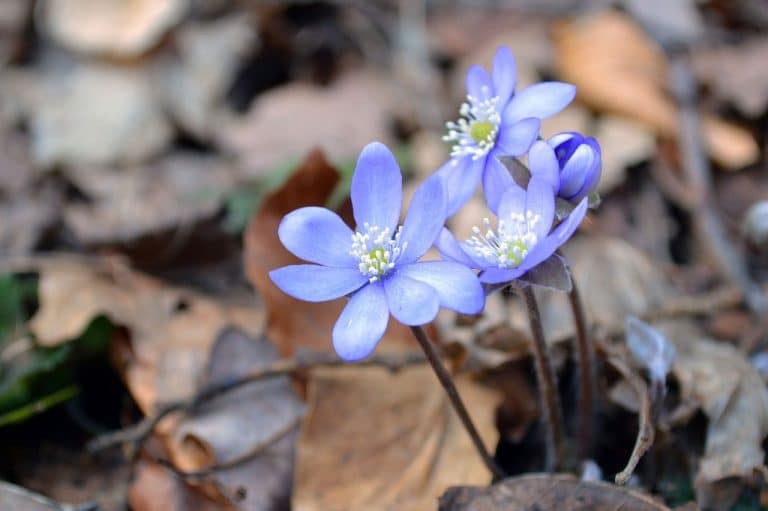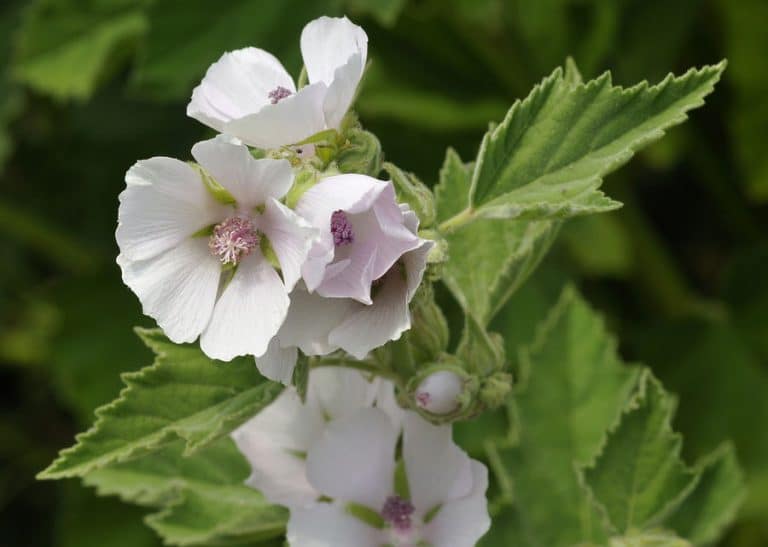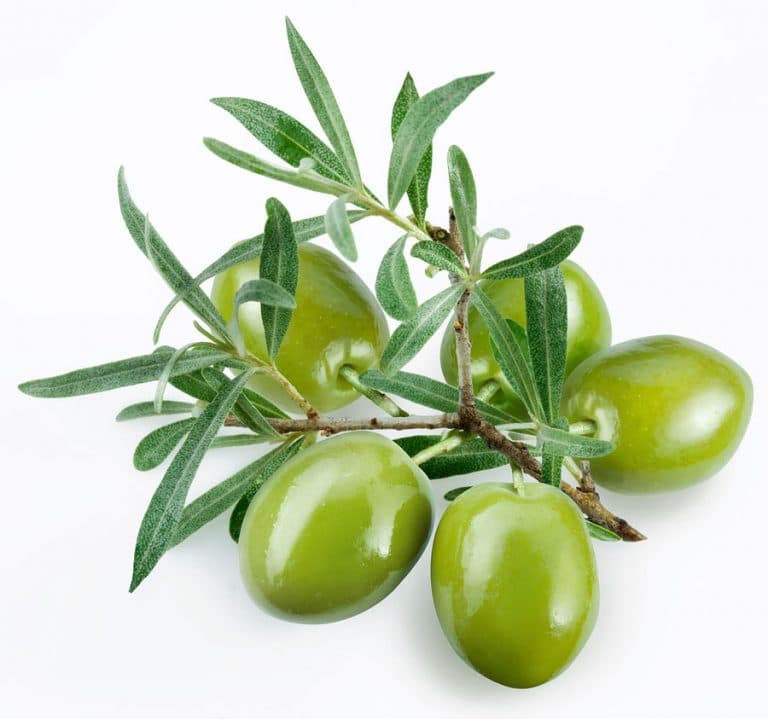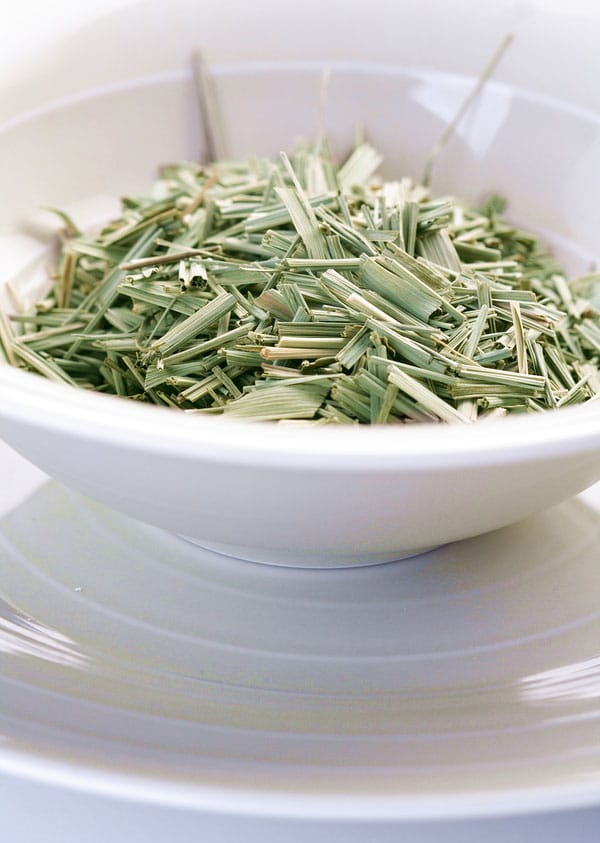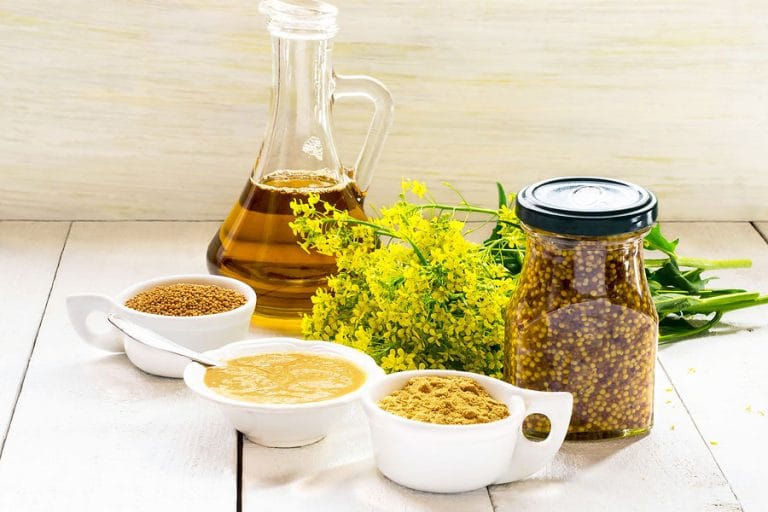Tribulus Terrestris
Scientific Classification
| Kingdom: | Plantae |
| Order: | Zygophyllales |
| (unranked): | Angiosperms |
| (unranked): | Eudicots |
| (unranked): | Rosids |
| Family: | Zygophyllaceae |
| Genus: | Tribulus |
| Species: | T. Terrestris |
| Binomial Name: | Tribulus Terrestris |
The Tribulus Terrestris plant has many common names. It is also known As Bindii, Burra Gokharu, Caltrop, Devil’s Thorn, Puncture Vine, Tackweed, Cat’s Head, Devil’s Eyelashes, Devil’s Weed, and Goathead. It is a tap-rooted herbaceous perennial plant. Its root, fruit, and leaf are useful parts and are used in medicines. It is a powerful medicinal plant and is used to treat diseases of the kidney, Urinary tract, and liver. This plant has diuretic and antiseptic properties. The leaves of this plant contain Steroidal Saponins that have the ability to increase hormone levels in adults. It is a rapidly growing plant, growing up to 2 feet in height. In the United States, this plant grows as a weed on the roadside and in the fields.
History
In Sanskrit, the Tribulus Terrestris plant is known as Gokshura. This word comes from two Sanskrit words Go means Cow and Kshura means barb or razor. For more than 3000 years, in India, its fruit has been used in Ayurvedic medicines and also in traditional Chinese medicines to treat diseases. In Ancient times, the Greeks used it as a general tonic.
Anatomy
The stem of the Tribulus Terrestries plant is hairy and branch from the crown. Its leaves are pinnately compound and opposite. Its hairy leaflets are opposite. These leaves are up to 1/8 inches long. The flowers of this plant have 5 lemon yellow petals, 10 stamens and 5 sepals. These flowers are 5 to 10 meters wide. Its flower if followed by fruit that simply falls separately into 5 nut-lets, which bear 2 to 4 sharp and hard spines. A hard membrane, helps to stack the seeds on top of each other in each nut-let. The flowers of this plant are hermaphrodite. Its fruits are continuously produced in the autumn and the summer season. A single plant can produce approximately 400 fruits.
Habitat
In southern Asia, Southern Europe and Australia and Africa, the Tribulus Terrestries plant is native to warm tropical and temperate regions of the old world. It is a Mediterranean plant which produces fruits with spines. It grows in arid regions and deserts. In Australia and United States it is considered as a noxious weed. In colder climates, it grows as an annual. In Ayurvedic tradition, it is used as a diuretic in pacifying vote and also helpful to treat disorders of the genitourinary system. In other traditions of medicines, this herb is useful in the treatment of Angina Pectoris and Hypertension. It is also used in the treatment of urinary tract infections. It grows in Mexico, United States, Eastern Europe, China and India. In Japan this plant grows on sandy seashores.
Soil for Planting
In southern Asia, Southern Europe and Australia and Africa, the Tribulus Terrestries plant is native to warm tropical and temperate regions of the old world. It is a Mediterranean plant which produces fruits with spines. It grows in arid regions and deserts. In Australia and United States it is considered as a noxious weed. In colder climates, it grows as an annual. In Ayurvedic tradition, it is used as a diuretic in pacifying vote and also helpful to treat disorders of the genitourinary system. In other traditions of medicines, this herb is useful in the treatment of Angina Pectoris and Hypertension. It is also used in the treatment of urinary tract infections. It grows in Mexico, United States, Eastern Europe, China and India. In Japan this plant grows on sandy seashores.
Tribulus Terrestris prefers well drained soil. Sandy, clayey and loamy soil is suitable for this plant. It prefers moist and dry soil. It has the ability to tolerate maritime exposure and many soil conditions but does well in sandy soil.
Planting
Planting of the Tribulus Terrestris plant is done by seeds. It is propagated by seeds. Before planting, the seeds should be stratified for one to three months. The seeds should be covered with moist sand and should be placed in the refrigerator till the germination process takes place. After the seeds sprout, it can be transplanted to a warm and sunny location where it receives enough daylight and sun, it prefers a south and southeast direction where the temperature is warm. It should be planted about half an inch deep in the soil at a gap of 3 to 4 feet from all sides as it requires a roomy space to grow and. The preferable soil is sandy with a good drainage system, or sand can be mixed with the top layer of the garden soil to make it sandy. The seeds should be sown in the spring season.
Watering
Regular watering is essential for the Tribulus Terrestris plant.. Newly planted seedlings require watering every day till they can reach a height of 6 inches. Once established, it needs very little water to survive. In dry conditions, watering in a week is necessary.
Temperature and Humidity
Tribulus Terrestris requires high temperature for the germination and growth of the plant.
Flowering and Maturing Care
This plant requires less care and maintenance. It requires direct and full sunlight. It does not require fertilizers.
Harvest
When the Tribulus Terrestris plant begins to bloom, its healthy parts are harvested for the use of medicines. Its outer portion of the stem which contains flower buds and young leaves are harvested. The flowers are harvested when they are in full bloom. Harvesting of this plant is done when its seed pods are ripe and green. For removing these seed pods Gloves are used or they are bushed with another tool.
Pests and Pesticides
Pests and diseases cause damage to the Tribulus Terrestris plant. During the vegetation period, mildew attacks the plant. Caterpillars and cotton Aphid pests can also cause damage. Mildew causes brown spots on the leaves of the plant. Spider Mite pest also attacks and harm the plant.
Dosage
The Tribulus Terrestris contains many properties to cure ailments, but a continuous usage of this herb is not recommended. There should be at least a gap of 1 week after a two weeks use. The most common form of this herb available in the market is capsules and tinctures. The effect of this herb is visible only after 2 to 3 days, but can be rapid and more effective when mixed and used with other herbs. The prescribed dosage of this herb is limited from 600 to 1200 mg per day in two doses, one dose in the afternoon and one dose at night, but this herb should be used before 8 pm for a better result.
Side Effects
Though it is a strong herb, it possibly does not have any serious side effects if taken in the prescribed quantity. But, people with chronic diseases, pregnant ladies and breast feeding mothers should not use this herb. This herb should not be used by diabetic patients as it reduces the blood sugar amount to a terribly low level and may increase the effect of other medicines used by patients having chronic heart diseases and high blood pressure.
Uses
The roots, leaf and fruits of the Tribulus Terrestris plant are very useful. Its fruit and root is used for male vitality. It is used in the treatment of cardiovascular conditions including high cholesterol, high blood pressure, angina, poor circulation and anemia. In Chinese medicine, it is helpful for treating overeating, food poisoning and as a liver tonic. Its seeds can be dried, and powdered for use as a tea and to convert to a capsule form. In the United States and Australia it is used to increase the sexual desire of both the men and women and also used for treatment of erectile dysfunction in men. It is also helpful in the treatment of external and internal disorder of the immune system. It is used in the treatment of skin disease, psoriasis and eczema. This herb is used to treat problems of the kidney including painful urination, stones in kidney and kidney disorder. It is also helpful in the treatment of cough, joint pain, and dizziness.

Having discovered a fondness for insects while pursuing her degree in Biology, Randi Jones was quite bugged to know that people usually dismissed these little creatures as “creepy-crawlies”.

